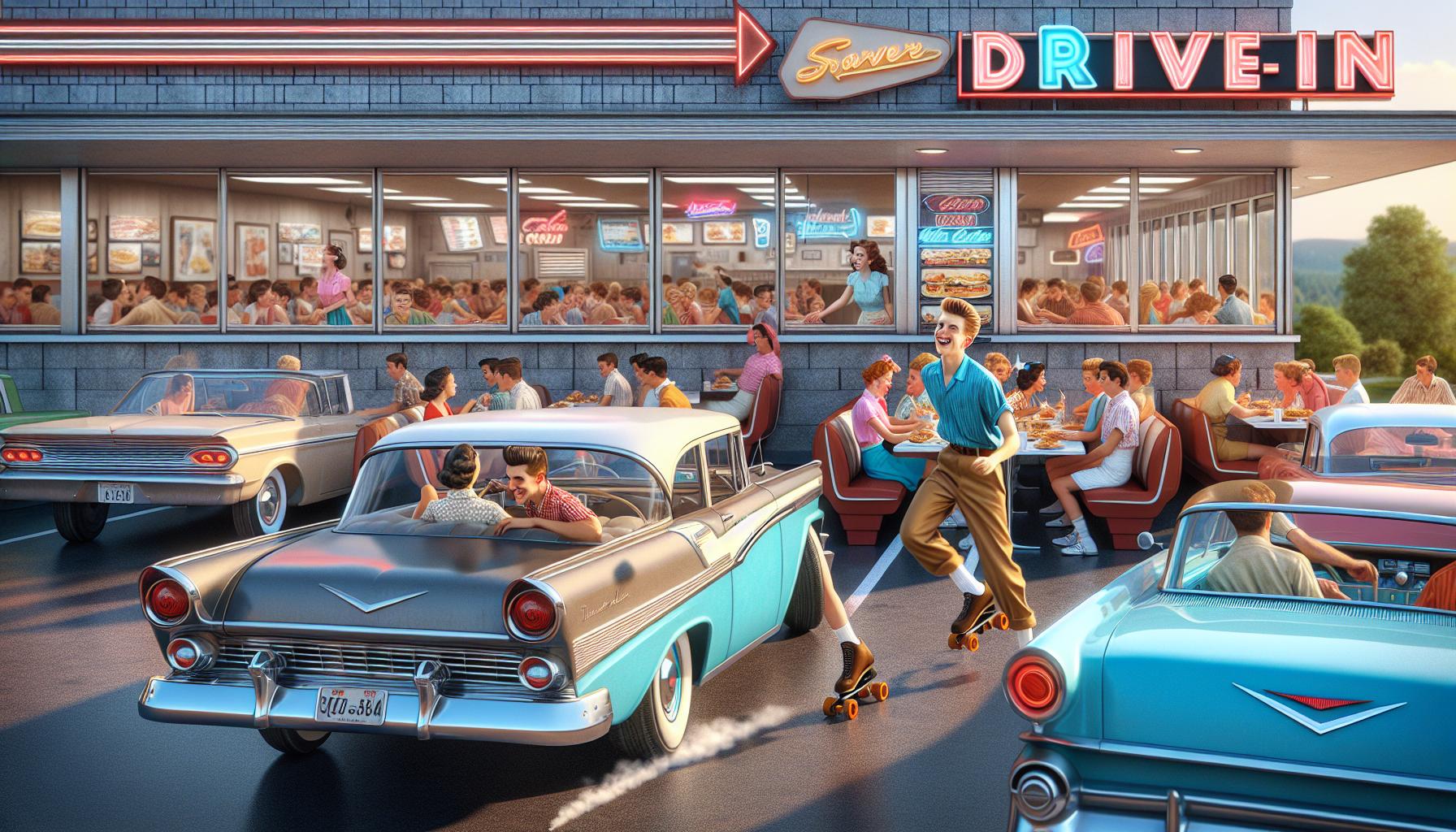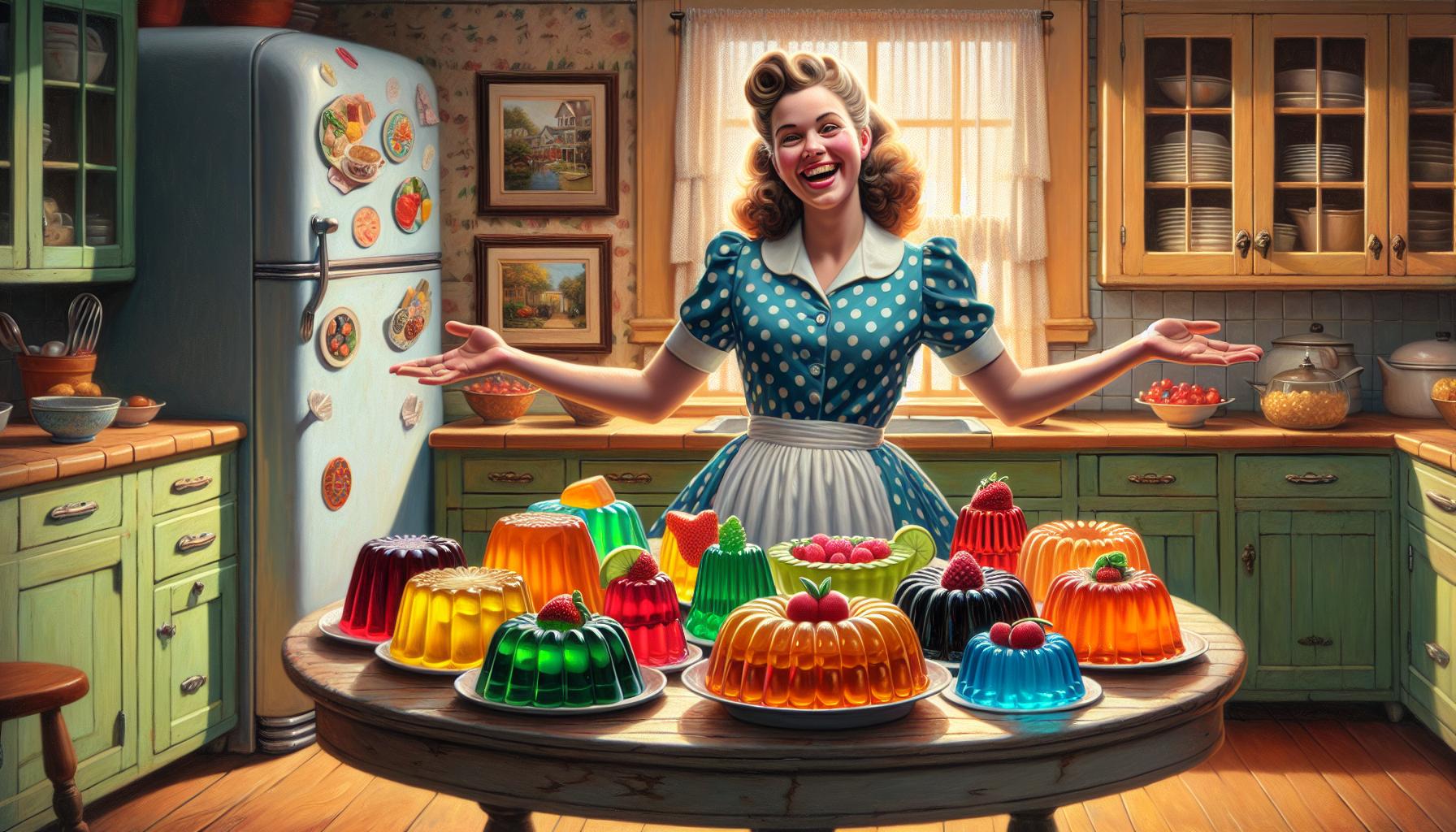The 1950s Food Trends weren’t just about poodle skirts and rock ‘n’ roll – they were a golden age of peculiar culinary adventures. From jellied salads that wobbled their way onto dinner tables to the rise of TV dinners that changed American eating habits forever this decade transformed how people thought about food.
As suburbs expanded and convenience became king homemakers embraced wild new recipes featuring canned goods frozen foods and interesting combinations that might raise eyebrows today. The post-war economic boom brought newfangled kitchen appliances colorful cookbooks and an explosion of processed foods that promised to make life easier for the modern family. It’s no wonder that meals from this era continue to fascinate food enthusiasts and historians alike.
1950s Food Trends
The 1950s Food Trends revolutionized American dining with innovative convenience foods. Homemakers embraced new cooking methods that combined fresh ingredients with processed foods, creating distinctive dishes that characterized the decade.
TV Dinners and Convenience Meals
Swanson introduced the first TV dinner in 1953, selling 10 million units in the first year alone. These pre-packaged meals featured turkey, cornbread stuffing, peas, sweet potatoes in a compartmentalized aluminum tray. TV dinners transformed family dining by offering complete meals ready in 25 minutes, aligning with the rise of television entertainment. Major manufacturers like Banquet Foods, Morton’s expanded the frozen dinner market with options including fried chicken, pot pies meatloaf. The convenience food industry grew exponentially, introducing instant coffee, cake mixes powdered drink mixes into American households.
Casseroles and One-Dish Wonders
Campbell’s Soup Company sparked a casserole revolution with their cream of mushroom soup serving as a base for countless recipes. Green bean casserole emerged as an iconic dish, combining canned green beans, cream of mushroom soup crispy fried onions. Tuna noodle casserole became a weeknight dinner staple, mixing canned tuna, egg noodles processed cheese. Home cooks created variations using different protein sources such as chicken, ground beef ham combined with vegetables processed soups. These dishes gained popularity through women’s magazines recipe cards distributed by food manufacturers.
The Rise of Fast Food Culture

The 1950s Food Trends marked a transformative period in American dining with the emergence of fast food establishments. This shift revolutionized how Americans consumed meals outside their homes, creating a culture that emphasized speed, convenience and standardization.
Drive-In Restaurants
Drive-in restaurants emerged as social hubs in the 1950s, capitalizing on America’s growing car culture. These establishments featured carhops on roller skates delivering meals directly to customers’ vehicles. A&W Root Beer stands expanded from 450 locations in 1950 to 2,300 by 1960. Sonic Drive-In launched in 1953, introducing the first intercom ordering system. Popular menu items included hamburgers, french fries, milkshakes and hot dogs, served on distinctive metal trays that attached to car windows. The drive-in concept particularly appealed to teenagers, creating gathering spots for car enthusiasts and young families.
McDonald’s and the Golden Arches
McDonald’s revolutionized fast food through its Speedee Service System in 1948, setting industry standards. Ray Kroc acquired the McDonald’s franchise rights in 1955, opening his first restaurant in Des Plaines, Illinois. The iconic Golden Arches debuted in 1952, becoming a symbol of American fast food culture. McDonald’s streamlined menu featured 15-cent hamburgers, french fries and milkshakes, establishing the blueprint for modern fast food operations. By 1959, McDonald’s operated 100 restaurants across the country, introducing consistent food quality and service standards. The franchise model enabled rapid expansion, with each location maintaining uniform design, menu items and preparation methods.
Jell-O and Molded Desserts

Jell-O emerged as a cultural phenomenon in 1950s Food Trends America, transforming from a simple dessert into a versatile ingredient for both sweet and savory dishes. General Foods marketed Jell-O as a modern convenience food that enabled homemakers to create elegant molded dishes with minimal effort.
Sweet and Savory Gelatin Creations
Homemakers in the 1950s crafted elaborate gelatin-based dishes incorporating diverse ingredients:
- Lime Jell-O paired with cottage cheese tuna salads for ladies’ luncheons
- Strawberry Jell-O combined with fruits suspended in decorative layers
- Tomato aspic rings filled with seafood salad for formal dinner parties
- Crown jewel desserts featuring multicolored Jell-O cubes in vanilla gelatin
- Perfection salad mixing lemon Jell-O with shredded vegetables cabbage carrots
- Rainbow parfaits created with alternating layers of flavored gelatins cream
Sales data demonstrates Jell-O’s popularity:
| Year | Units Sold (Millions) | Popular Flavors |
|---|---|---|
| 1955 | 167 | Strawberry Lime Orange |
| 1957 | 198 | Cherry Lemon Raspberry |
| 1959 | 235 | Lime Orange Strawberry |
Knox Gelatin published recipe books featuring savory aspics meat molds showcasing gelatin’s versatility beyond desserts. Home economists developed intricate molding techniques using specialized copper ring molds bundt pans creating eye catching centerpieces for social gatherings.
Suburban Entertainment and Party Foods

The 1950s Food Trends suburban lifestyle created a vibrant entertaining culture centered around home gatherings. Social events transformed American homes into hubs of culinary experimentation where hosts showcased their creativity through distinctive party foods.
Cocktail Party Appetizers
Cocktail parties emerged as sophisticated social gatherings where hosts served bite-sized appetizers on decorative picks. Deviled eggs topped with paprika garnished many party platters, while stuffed celery filled with pimento cheese provided a savory crunch. Hosts arranged cheese balls rolled in crushed nuts alongside Ritz crackers on tiered serving plates. Popular hot appetizers included miniature meatballs in chili sauce, Swedish meatballs in cream gravy, and cocktail wieners wrapped in bacon. Cream cheese-based dips flavored with dried soup mixes accompanied an array of potato chips ridged crackers.
Backyard Barbecues
Suburban backyards became weekend entertainment spaces as outdoor grilling gained popularity across America. Hamburgers topped with processed cheese slices emerged as the quintessential barbecue fare, along with hot dogs served in split-top buns. Hosts marinated chicken pieces in bottled barbecue sauces while guests brought potato salad coleslaw to share. Corn on the cob wrapped in foil complemented grilled meats, with watermelon slices serving as the standard summer dessert. Weber introduced their iconic kettle grill in 1952, revolutionizing backyard cooking with its dome-shaped design. Charcoal briquettes replaced traditional wood, making grilling more accessible to suburban families.
Kitchen Appliance Revolution
The 1950s kitchen underwent a remarkable transformation with the introduction of innovative appliances that streamlined meal preparation. Electric appliances redefined cooking efficiency while establishing new standards for modern home kitchens.
Modern Conveniences That Changed Cooking
Electric mixers emerged as essential kitchen tools, with the KitchenAid Model K introduced in 1950 featuring multiple speeds and attachments. The revolutionary Sunbeam Mixmaster dominated countertops across America, selling 1.2 million units by 1955.
Key appliance innovations included:
- Stand-alone freezers storing prepackaged foods for months
- Electric can openers eliminating manual labor
- Automatic coffee percolators brewing consistently
- Electric skillets offering precise temperature control
- Dishwashers reducing post-meal cleanup time
General Electric introduced built-in appliances in 1954, creating a seamless kitchen aesthetic. The development of frost-free refrigerators by Frigidaire in 1958 eliminated manual defrosting tasks.
| Appliance Sales Growth 1950-1959 | |
|---|---|
| Electric Mixers | 325% |
| Dishwashers | 275% |
| Built-in Ranges | 180% |
| Refrigerators | 150% |
These modern conveniences transformed food preparation from a time-consuming task into an efficient process, marking a significant shift in American domestic life.
Marketing and Food Advertising
Food advertising in the 1950s Food Trends transformed American consumer habits through strategic television commercials, magazine spreads, and billboard campaigns. Television advertisements reached 90% of American households by 1959, creating a powerful platform for food companies to showcase their products.
Betty Crocker emerged as a prominent marketing icon, appearing on General Mills products and publishing cookbooks that sold 65 million copies throughout the decade. Food manufacturers utilized innovative marketing techniques:
- Full-color magazine spreads in publications like Ladies’ Home Journal featuring styled food photography
- Radio jingles promoting products such as Kraft Macaroni & Cheese and Campbell’s Soup
- Product placement in popular TV shows including “I Love Lucy” and “Leave It to Beaver”
- Billboard campaigns highlighting convenience foods across major highways
Major food brands capitalized on the post-war prosperity through targeted advertising campaigns:
| Brand | Marketing Innovation | Impact |
|---|---|---|
| Swanson | TV Dinner newspaper ads | 10 million units sold in 1954 |
| Jell-O | Recipe cards in magazines | 50% sales increase 1950-1956 |
| Campbell’s | “Open Soup Season” campaign | 40% market share by 1959 |
| Kraft | Recipe booklet distribution | 15 million copies circulated |
Marketing strategies emphasized convenience, modernity, and social status. Food companies partnered with appliance manufacturers to create coordinated campaigns promoting new kitchen technology alongside packaged foods. Supermarket displays featured end-cap promotions with recipe suggestions, combining multiple advertised products into complete meal solutions.
Characters like Tony the Tiger and the Pillsbury Doughboy made their advertising debuts, establishing brand mascots that connected with consumers through memorable personalities. These marketing innovations created lasting changes in American food purchasing patterns, establishing brand loyalties that persisted for decades.
The 1950s revolutionized American food culture through technological advancement convenience foods and innovative marketing strategies. This transformative era introduced timeless classics like TV dinners casseroles and Jell-O creations while establishing new social norms around dining and entertainment.
The decade’s culinary innovations weren’t just about food – they reflected broader societal changes including suburban expansion increased prosperity and the rise of consumer culture. Many of these trends continue to influence modern American eating habits from fast food to frozen dinners.
The 1950s Food Trends stand as a pivotal moment that forever changed how Americans cook eat and gather around food. Its lasting impact on kitchen technology food preparation and dining culture demonstrates why this era remains a fascinating chapter in American culinary history.



